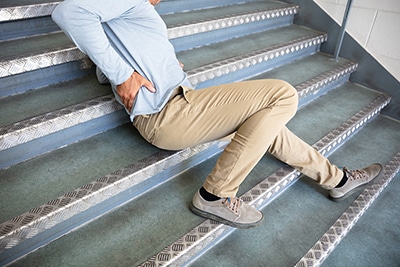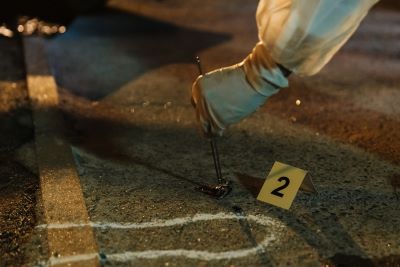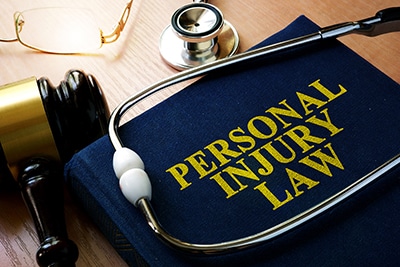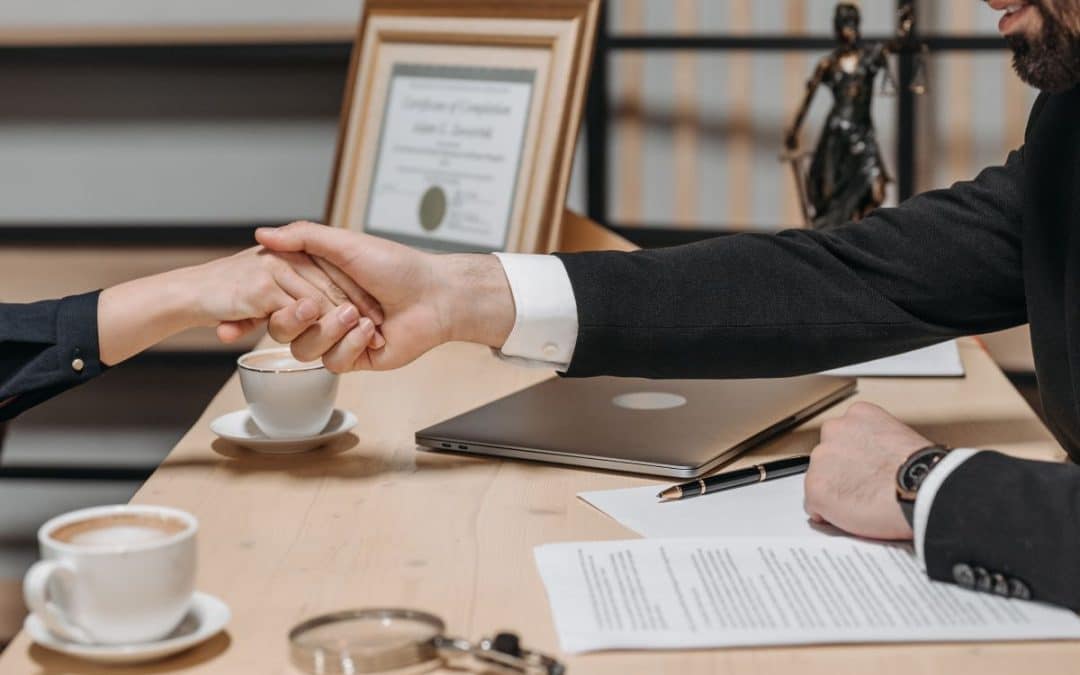At the Traffic Accident Law Center in San Marcos, our dedicated team of Personal Injury Lawyers and Slip and Fall Attorneys are here to help you navigate through the complexities of personal injury law. With years of experience in handling slip and fall accidents, as well as car accident-related incidents, we understand the intricacies of these cases and work diligently to ensure that those who have suffered due to negligence get the compensation they deserve. Our lawyers are equipped with the skills and resources required to handle these cases effectively and efficiently. Let us help you put your life back on track after a devastating accident.
Personal Injury Law Related To Slip And Fall Incidents

If you’ve suffered injuries from a slip and fall incident due to factors like wet floors, poor lighting, or uneven surfaces, you may be entitled to compensation for your medical bills, loss of income, pain and suffering, and other damages. These cases can be complex, requiring thorough investigation and evidence collection. It is crucial to seek legal representation from experienced attorneys who offer a free consultation and have a dedicated legal team.
They will ensure your rights are protected and you receive the fair compensation you deserve. Personal injury law, also known as premises liability law, pertains to situations where an individual is injured due to unsafe conditions on someone else’s property. The premise is that property owners have a legal obligation to maintain safe premises, and failure to do so constitutes negligence.
Common Causes of Slip and Fall Accidents
Slip and fall accidents can occur due to a variety of reasons, with some being more common than others. One of the leading causes is wet or slippery surfaces, often a result of spills, recent cleaning, or weather conditions like rain or ice. Faulty or poorly maintained flooring can also contribute to slip and fall incidents – this includes cracked or uneven pavement, loose floorboards, or torn carpeting. Inadequate lighting can make it difficult for individuals to see and avoid potential hazards.
Other common causes include cluttered floors, improper footwear, and unexpected obstacles such as cords or wires on the ground. Lastly, stairs without handrails or with damaged steps are a common site for falls. Understanding these common causes can help in identifying negligence and proving liability in slip and fall cases.
Filing Slip and Fall Claims
When it comes to filing a slip and fall claim, or any personal injury claim, there are several important steps to consider. Firstly, seek medical attention promptly after the incident to document any injuries sustained. Secondly, report the incident to the owner or manager of the property, ensuring the details of the accident are recorded. If possible, gather evidence at the scene by photographing the hazardous condition and collecting the contact details of any witnesses.
In most cases, a slip and fall claim, or any personal injury claim, is made against the property owner’s insurance policy. As the claimant, you need to prove that the property owner’s negligence caused your injuries. This often requires showcasing that the owner was aware, or should have been aware, of the hazardous condition that led to the accident but failed to rectify it in a reasonable manner.
It’s important to note that the statute of limitations for filing a slip and fall claim, or any personal injury claim, varies by state, so it’s crucial to act swiftly. Consulting with seasoned slip and fall attorneys or personal injury lawyers can greatly enhance your chances of a successful claim, ensuring you adhere to the correct procedures and meet all necessary deadlines. They can also assist in accurately evaluating the full extent of damages incurred, including those related to medical expenses, lost wages, and emotional distress.
The Importance of Evidence in Slip and Fall Cases

In slip and fall cases, the collection and presentation of compelling evidence is paramount in establishing the property owner’s negligence and securing fair compensation for your injuries in personal injury lawsuits. Evidence can come in many forms, including photographs of the hazardous condition, testimony from eyewitnesses, medical records, and incident reports.
Photographic evidence of the hazard that caused the fall can be instrumental in proving negligence, especially in personal injury lawsuits. This might include wet floors without warning signs, damaged flooring, or poor lighting conditions. Eyewitnesses can also provide critical support to your case by confirming the conditions at the site of the accident and contributing to the understanding of what occurred.
Medical records serve as concrete evidence of the injuries sustained due to the fall in personal injury lawsuits. These records document the nature and severity of your injuries, the treatment required, and the impact of these injuries on your life. They also provide a basis for calculating the compensation you may be entitled to for medical costs, lost wages, and suffering.
Incident reports, whether they be official reports from the property owner or your personal account of the event, offer a timely and detailed record of the circumstances surrounding the accident in personal injury lawsuits.
The importance of this evidence cannot be overstated in personal injury lawsuits. It not only strengthens your claim but also provides your attorney with the necessary tools to effectively negotiate with insurance companies or argue your case in court, if necessary. Therefore, preserving and collecting all possible evidence in the aftermath of a slip and fall accident is a crucial step toward securing just compensation in personal injury lawsuits.
Challenges of Proving Negligence in Slip and Fall Cases
Proving negligence in slip and fall cases can present several challenges for accident victims. The key obstacle often involves demonstrating that the property owner knew or should have known about the dangerous condition and failed to take appropriate action to rectify it. This can be difficult to establish, particularly if there were no previous incidents or complaints related to the hazard.
Additionally, it may be challenging to prove that the property owner’s negligence directly resulted in your injuries in a personal injury lawsuit. For instance, the defendant may argue that your own carelessness contributed to the accident, or that the hazard was so obvious, a reasonable person would have avoided it.
Another hurdle can be the possible lack of concrete evidence for insurance companies. For example, if there were no witnesses to the accident or if crucial evidence like surveillance footage is missing or not available, it can be tough to substantiate your claims. Furthermore, insurance companies often have teams of experienced lawyers who are adept at minimizing or denying claims made by accident victims.
They might question the severity of your injuries, argue that your medical issues were pre-existing, or suggest that you’re exaggerating your pain and suffering. These challenges underline the importance of consulting with knowledgeable personal injury attorneys. They can help navigate these complexities, gather and present compelling evidence, and advocate for your rights, improving your chances of obtaining the compensation you deserve in a personal injury lawsuit.
Choosing a Personal Injury Lawyer for Your Slip and Fall Case

Choosing the right personal injury lawyer can be a pivotal factor in the outcome of your slip and fall case, especially in cases involving catastrophic injuries and car accidents. It’s crucial to select a lawyer who has substantial experience and expertise in this specific field of law, including dealing with insurance companies in San Marcos. They should have a proven track record of successfully handling slip and fall cases, and a deep understanding of the nuances involved in proving negligence.
When considering a lawyer, ask about their legal strategies, their communication style, and the potential costs involved. A good personal injury lawyer should be able to explain complex legal procedures in a way that’s easy to understand, keep you updated on the progression of your case, and be upfront about any fees or costs.
Don’t rush your decision. Take the time to meet with several attorneys, ask questions, and review their credentials, including their experience with insurance companies, catastrophic injuries, and car accidents in the San Marcos area. Dealing with an insurance company is more important for a San Marcos personal injury lawyer than you may think. Check their client reviews or testimonials to get an idea of their reputation and past performances. Remember, the lawyer you choose will be your advocate in a challenging process, so ensure you’re comfortable with them and confident in their ability to represent your interests effectively.
Finally, consider the lawyer’s resources. Handling a slip and fall case, especially those involving catastrophic injuries and car accidents, can be resource-intensive. They should have the necessary resources to thoroughly investigate your case, gather evidence, consult with experts if necessary, and see your claim through to its conclusion, whether that’s a negotiated settlement or a court verdict. So give us a call today for a free consultation.
Frequently Asked Questions
What is the average payout for a slip and fall in Texas?
The average payout for a slip and fall case in Texas can vary greatly depending on the specifics of the case. While it’s challenging to provide an exact figure without knowing the details of the incident, generally, claims could range from a few thousand dollars for minor injuries to several hundreds of thousands or even millions of dollars for severe cases involving long-term disability or wrongful death.
Factors that influence the payout include the severity of the injury, the impact on the victim’s life, the extent of the property owner’s negligence, and the skill and expertise of your attorney. It’s advisable to consult with an experienced personal injury attorney to get a more accurate estimate based on the specifics of your case.
How long after a slip and fall can you sue in Texas?
In Texas, the statute of limitations for personal injury cases, including slip and fall accidents, is generally two years from the date of the accident. This means you have two years to file a lawsuit against the party you believe to be responsible. If you fail to file within this timeframe, you’re likely to lose your right to sue for compensation for your injuries.
However, there can be exceptions depending on the specific circumstances of your case. For example, if you didn’t discover your injuries until a later date, the statute of limitations may start from the date of discovery. It’s essential to consult with a personal injury attorney to understand the time limits applicable to your case.
How long do you have to report a slip and fall in California?
In California, the timeframe for reporting a slip and fall accident can vary depending on the specifics of the situation. If the incident occurred on a private property, it’s generally advisable to report it to the property owner or manager as soon as possible, preferably in writing. However, the legal time limit or the statute of limitations for filing a lawsuit for a slip and fall injury in California is two years from the date of the accident.
If the injury was not discovered right away, then it is one year from the date the injury was discovered or reasonably should have been discovered. Failing to file a lawsuit within the statute of limitations usually means you lose your right to sue for compensation. It’s important to consult with a knowledgeable personal injury attorney to understand the specific time limits that apply to your case.
What is a no-win no fee?
A “no-win, no-fee” arrangement, also known as a contingency fee agreement, is a contract between the client and the attorney where the attorney’s legal fees are only payable if the case is won. This means that if the attorney does not win the case, the client is not obligated to pay any legal fees. However, the client may still be responsible for other costs not directly related to attorney’s fees such as court costs or fees for obtaining medical records.

